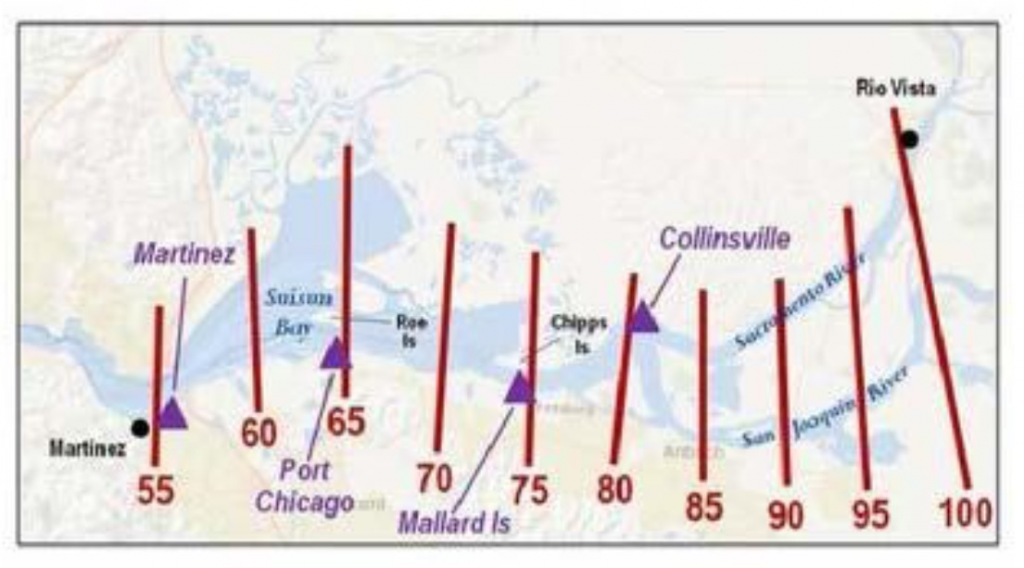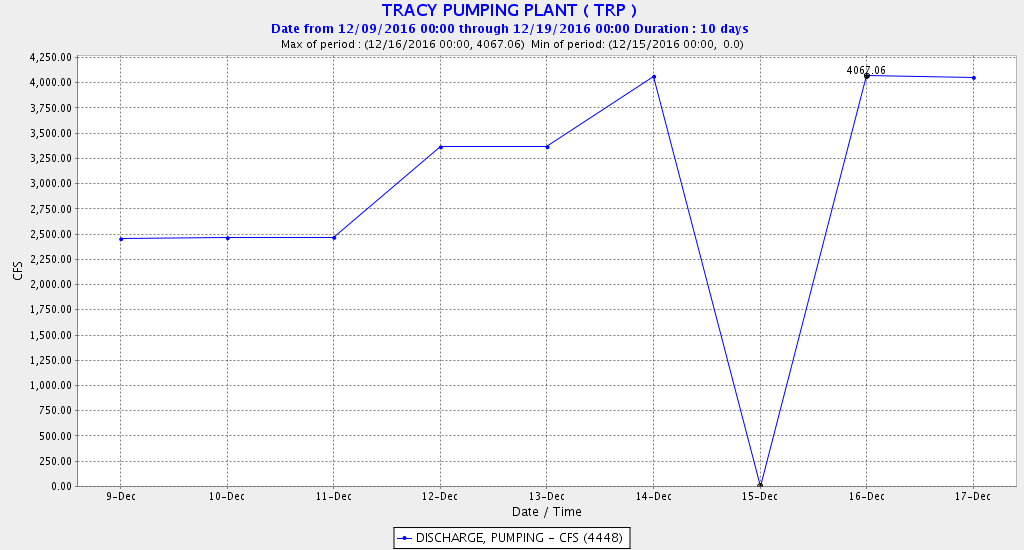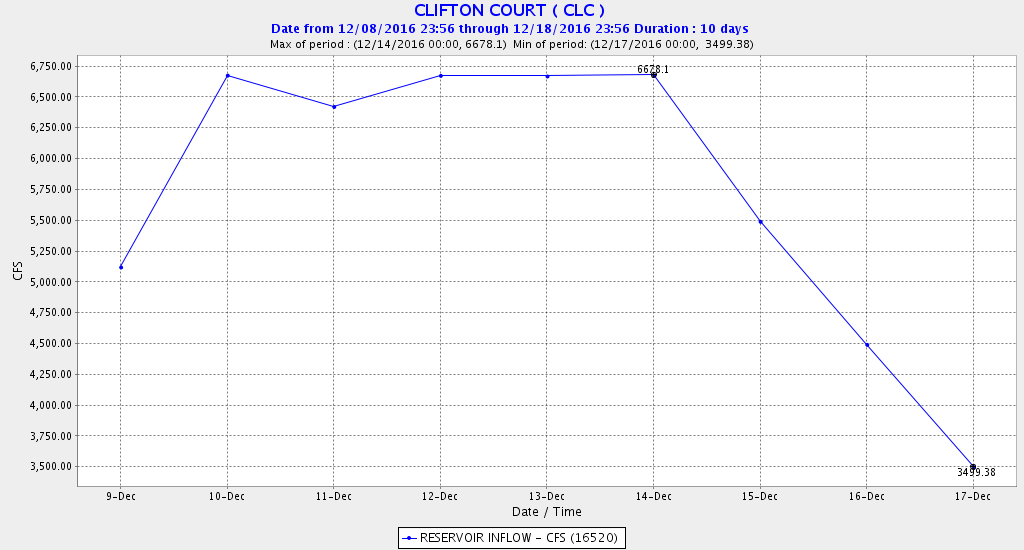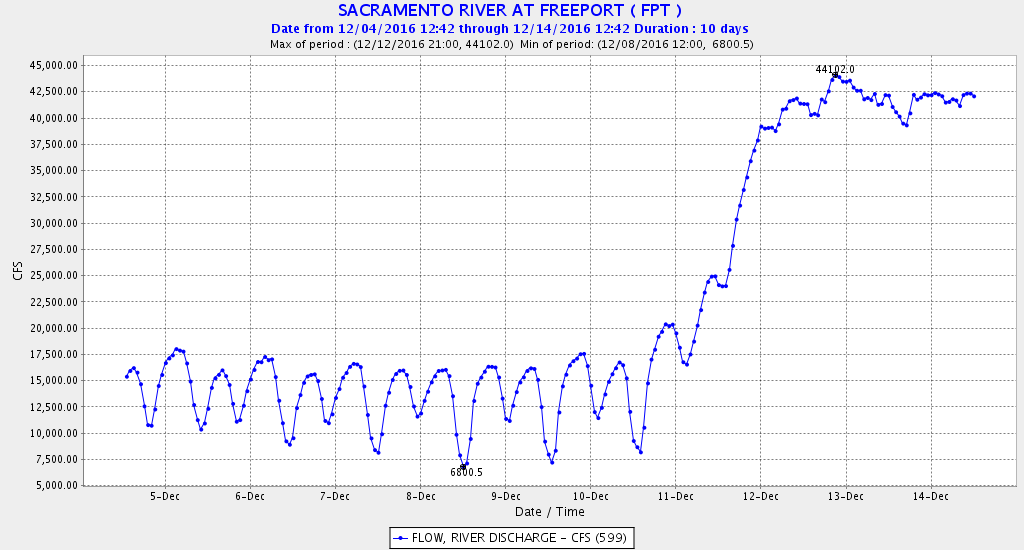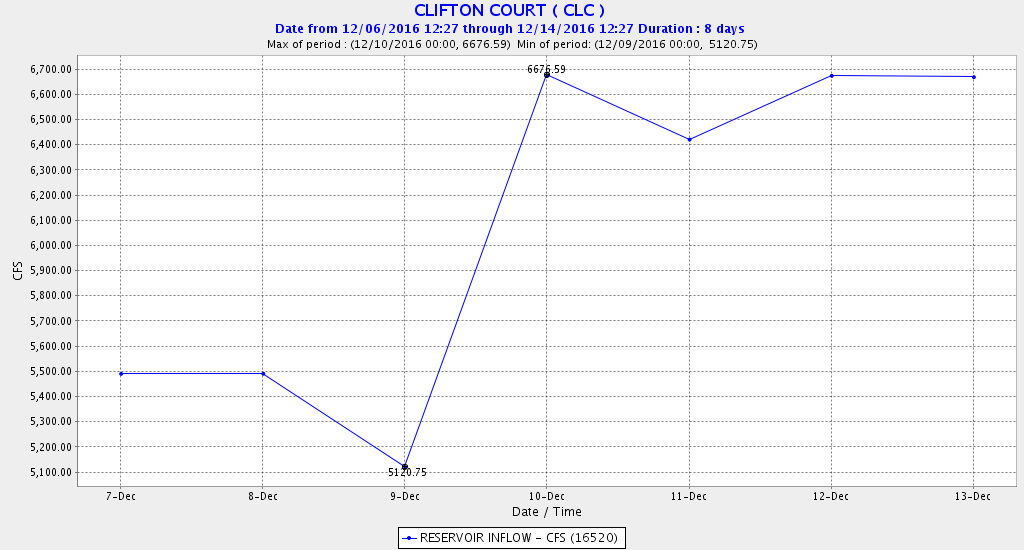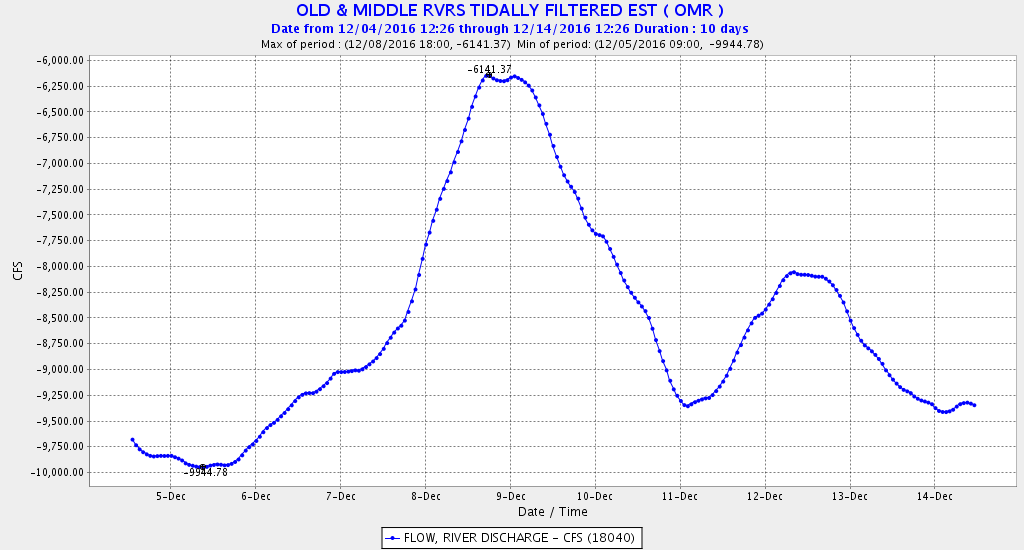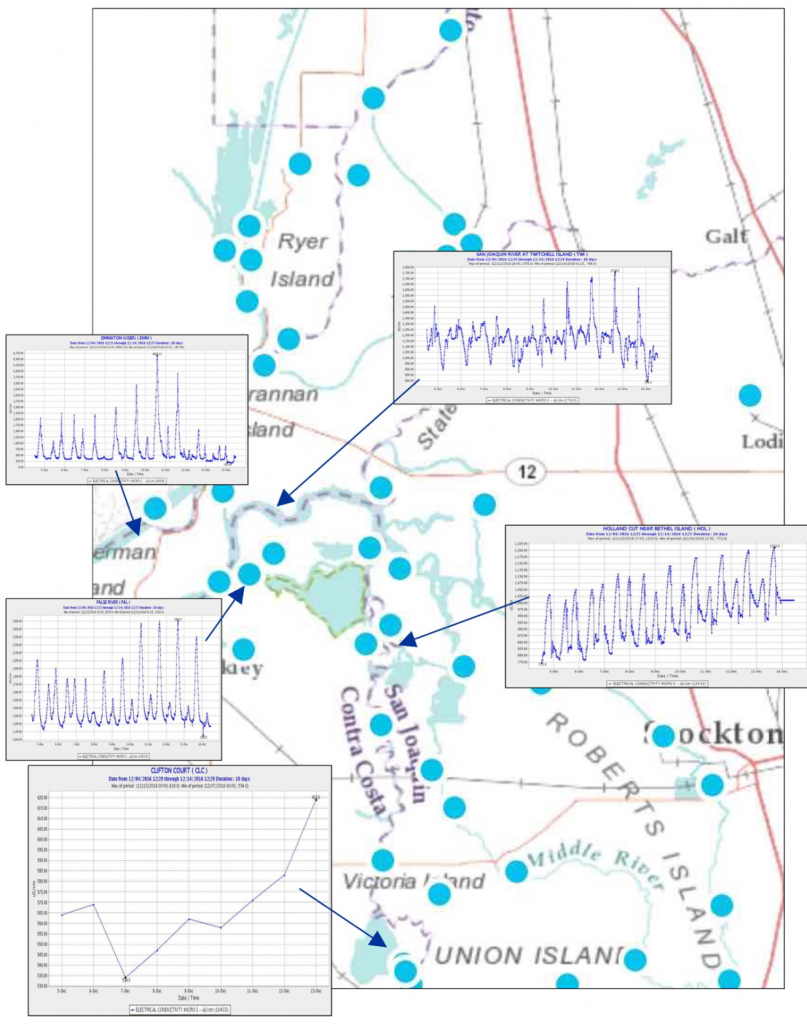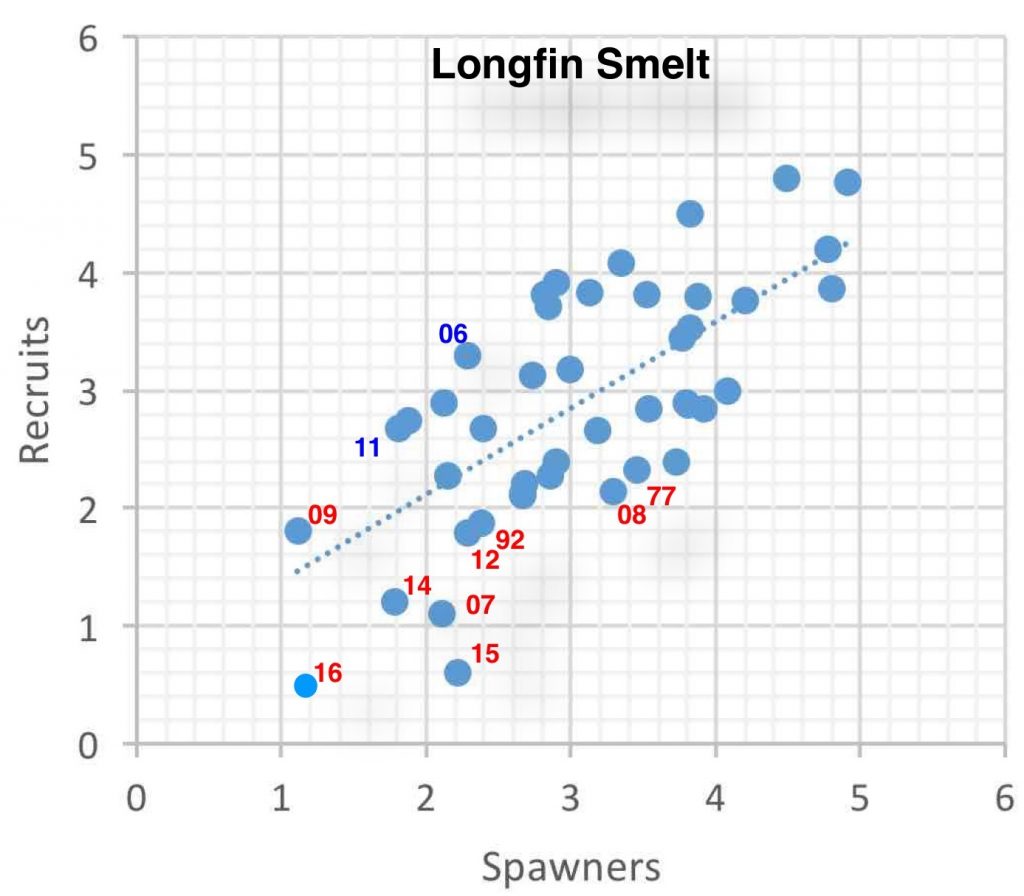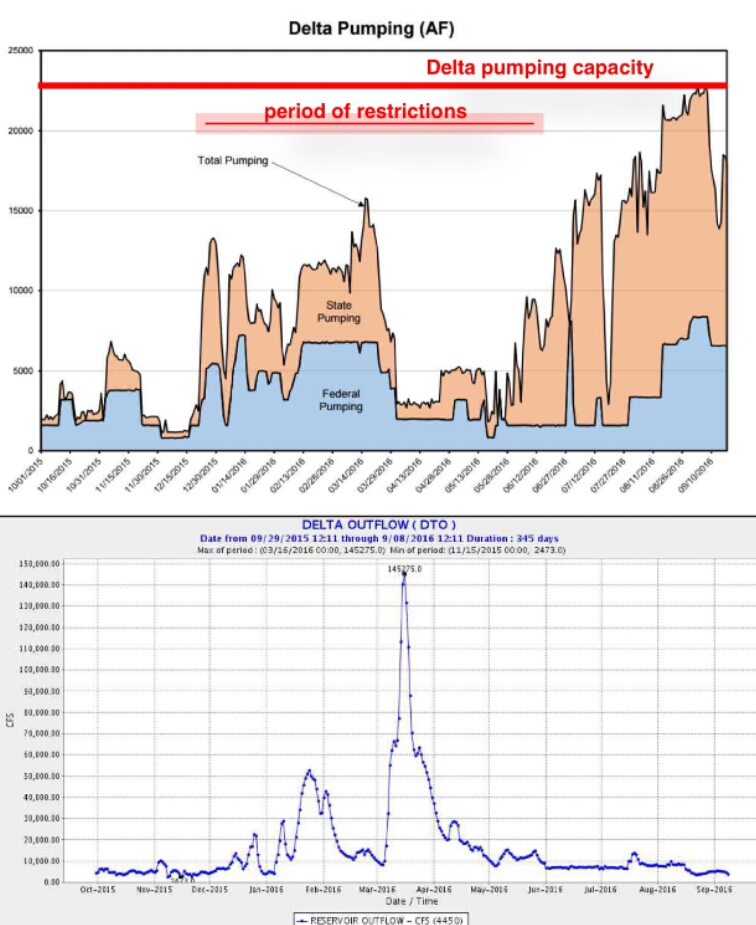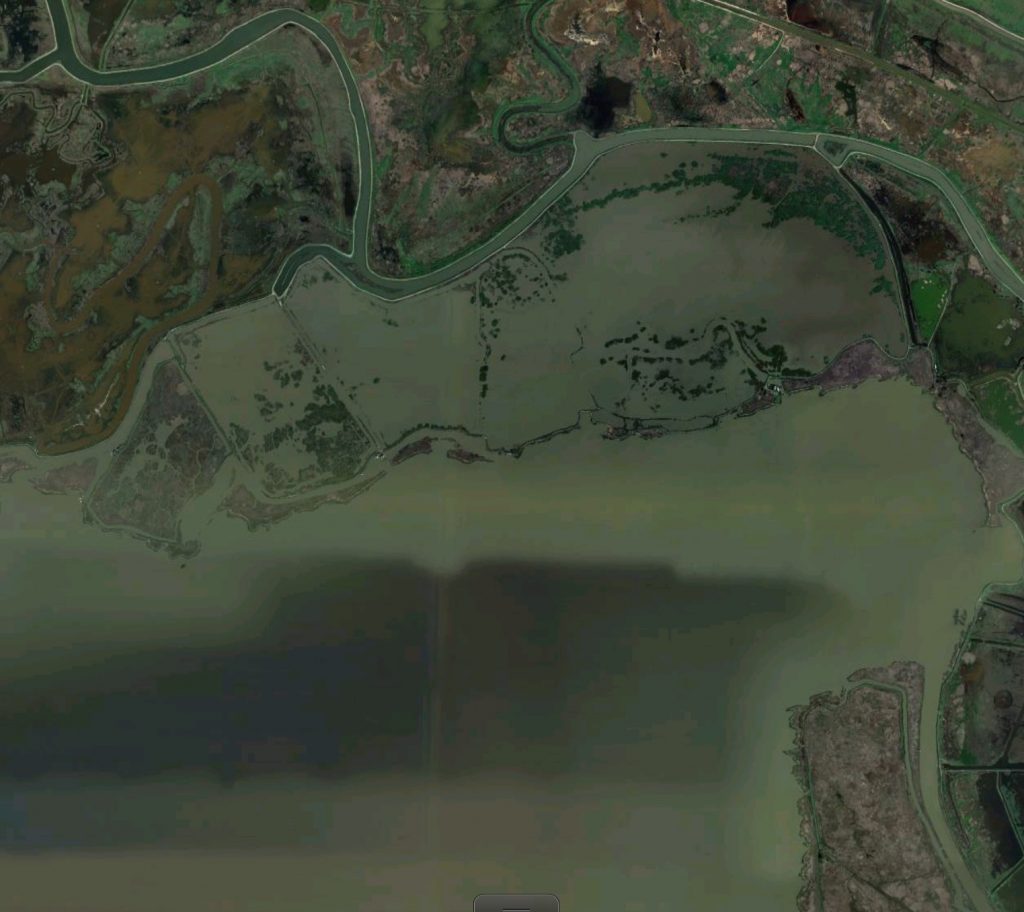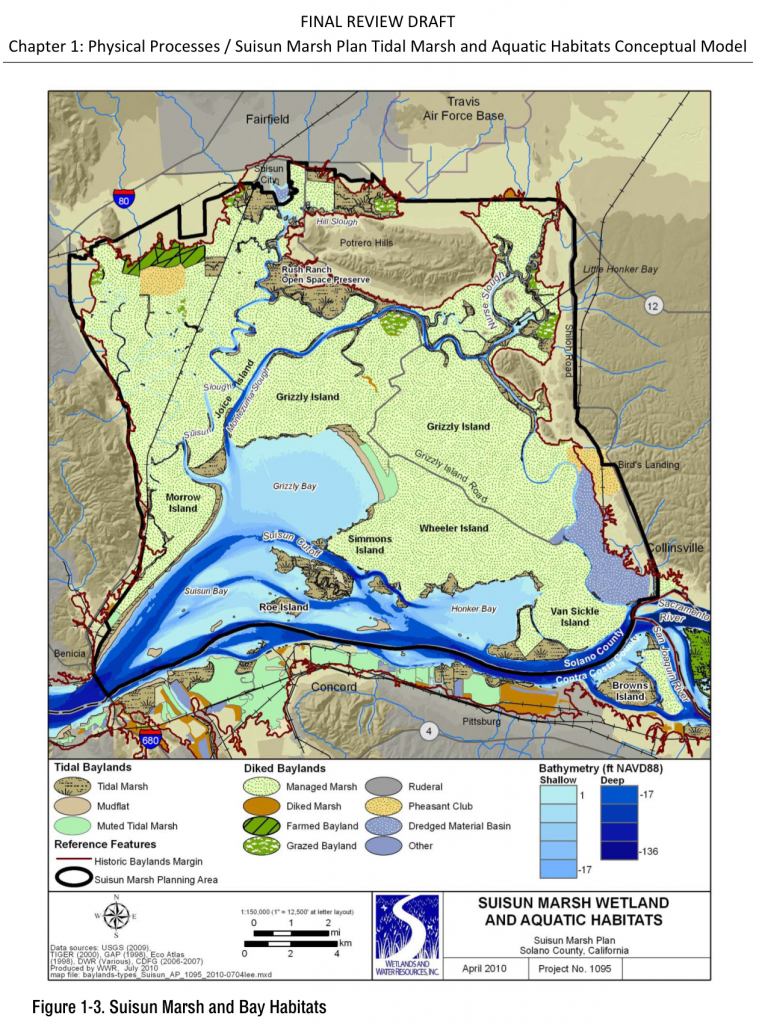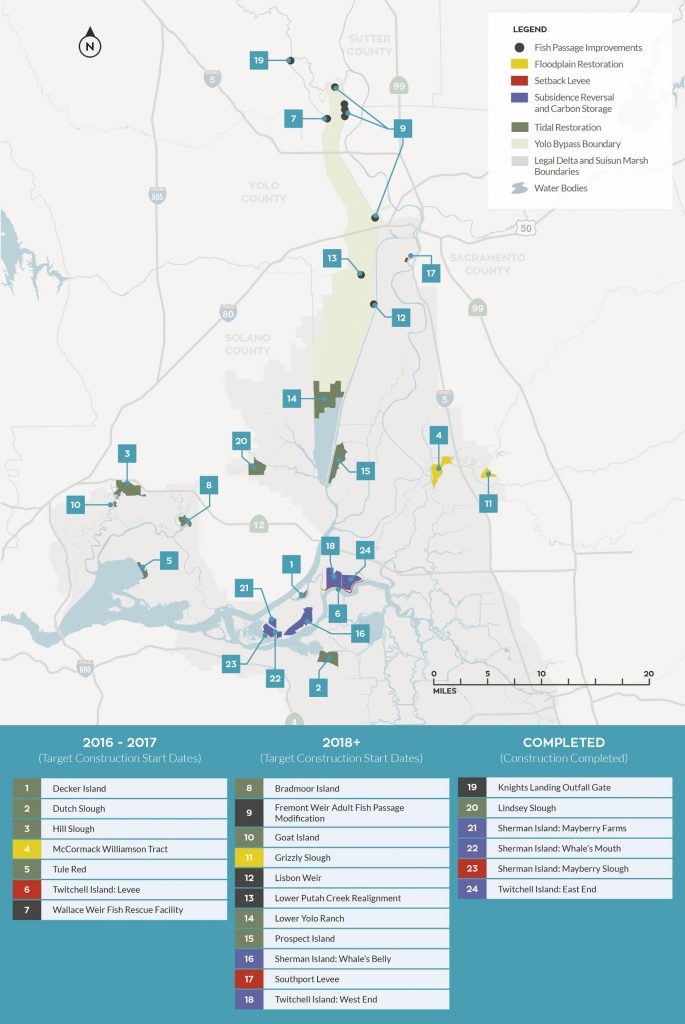Last week I opined about the lack of agencies’ (Smelt Working Group) concern relating to high Delta exports so far this December. SWG: “However, members are concerned regarding today’s OMR flow (daily average of approximately -10,000 cfs) and how it could influence the future distribution of the species. … The SWG expressed concerns regarding the current OMR flow (~-10,000 cfs). … A minority of the membership stated that we do not know what percentage of the population is currently at risk of being entrained; that entrainment into the OMR corridor could be occurring now and we would not know it. This minority indicated OMR should not exceed -5,000 cfs immediately.” (Smelt Working Group 12/5/16 meeting).
I was incorrect to label it a lack of concern when it was really lack of management action. The SWG had noted that two smelt had been caught in November trawl surveys in the lower Sacramento River near X2 (~2700EC), which was above km 81 and below km 85 on 12/5 (X2 actually reached km 95 on high tides by 12/10/16).
As it turned out, the minority recommendation was not adopted and high exports (~10,000 cfs) continued.
On 12/12 the SWG met again. It noted recent higher exports, an upstream movement of X2 to km 90 (because of higher exports), and perhaps most important the capture of 221 Delta smelt near km 90 in a single trawl on 12/10. Three Delta smelt were also captured in a trawl in Three Mile Slough (km 98). SWG: “Members indicated great concern that Delta Smelt could begin migrating upstream in the very near future, and find appropriate cues to move upstream on the San Joaquin River and into the sphere of influence of the pumps where the adults and subsequent young of the year will be at increased risk of being entrained into the Old and Middle River corridors, or even into the facilities themselves.”
At the 12/12 meeting, the SWG unanimously recommended reducing exports to limit OMR to -5000 cfs, per the Delta Smelt Biological Opinion. Reclamation/Interior/CDWR management did not adopt this recommendation until 5 days later. Exports were initially increased, and the OMR fell further to -10,323 cfs (see chart below) before export cutbacks started on 12/15, when the big surge of stormwater hit the Delta. As a consequence of th surge, X2 on the lower San Joaquin River pushed downstream of km 90 after 12/17. It is possible that some of the contingent of Delta smelt that were concentrated near X2 before 12/17 were drawn into the central Delta before OMR was limited. It remains to be seen if the -5000 OMR limit will be adequate to protect what appears to be a potentially significant uptick in the Delta smelt spawning population compared to the past four years. I wonder if these smelt were a consequence of last July’s outflow pulse. Are Delta smelt potentially making a small comeback like water year 2010, when OMR December limits in the 2009 Delta smelt biological opinion were first put in place?
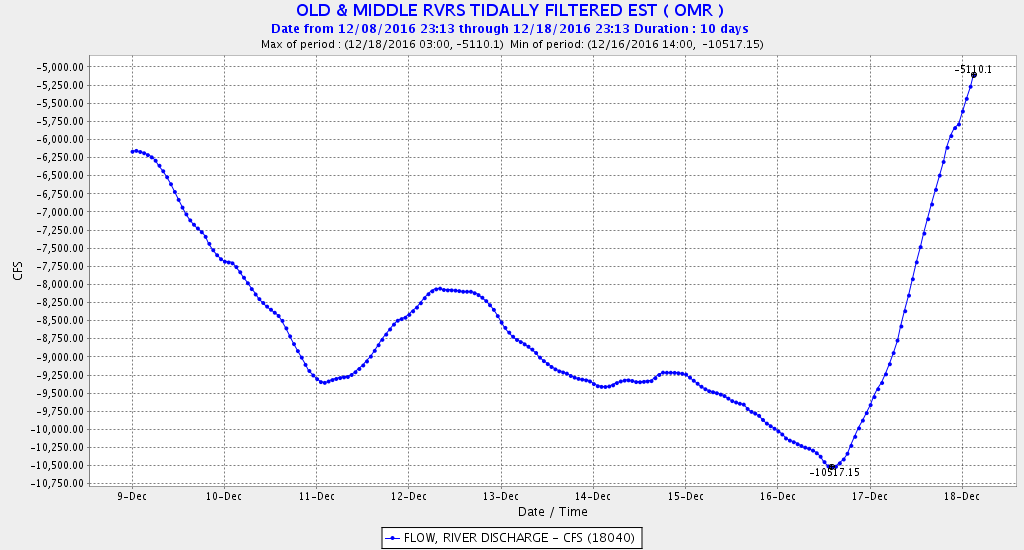
Combined flow in Old and Middle River in the central Delta. Minus flows represent the effects of Delta exports from the south Delta. Exports were cut from 11,000 cfs to 7500 cfs on 12/16-17.

Salinity (EC) at Jersey Point in lower San Joaquin River (km 98) 12/9-12/17. Sharp drop after 12/14 due to reduced exports and higher Delta inflows.

